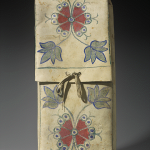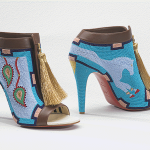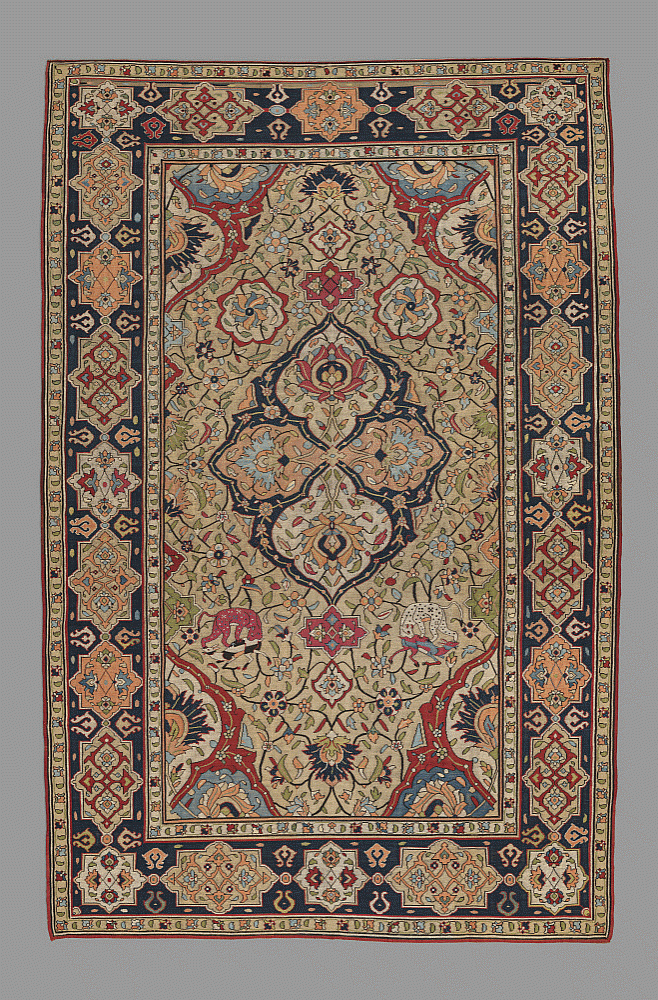Indigenous Designs
Grades 2–4
Workshop Overview
Students will tour the Nelson-Atkins collection in search of distinctive designs from various cultures, including Native American functional art. Inspired by their observations, students will make a “parfleche,” focusing on the design elements of shape and color to create patterns and balance. All supplies are provided.
Outcomes
- Students will describe and identify patterns in artwork from various cultures.
- Students will create a design using repeating shapes and colors.
- Students will identify a “parfleche” as a work of functional art in the Native American collection.
Curriculum
- Create Artwork Using a Variety of Processes and Materials
- Brainstorm Multiple Approaches to an Art or Design Problem
- Identify and Explain Where Different Cultures Illustrate History Through Art
- Recognize and Construct Lines of Symmetry for a 2-D Figure
Visual Arts
- Create artwork using a variety of processes and materials.
- Brainstorm multiple approaches to an art or design problem.
- Identify and analyze cultural associations suggested by visual imagery.
Math
- Recognize and construct lines of symmetry.
Social Studies
- Describe ways in which artistic creations serve as expressions and influence behavior of a particular culture.
Vocabulary
- Design – An arrangement of lines or shapes to create a pattern or decoration.
- Pattern – Decorative visual repetition (organized and random)
- Indigenous – Originating or occurring naturally in a particular place; Native.
- Asymmetrical Balance – Organization of a design so that unlike objects have equal visual weight.
- Symmetrical Balance – Organization of a design so that elements are the same on either side of a central axis.
- Radial Balance – Organization of a design so that elements branch out from a central point.
- Shape – An element of art that is two-dimensional and encloses space.
- Organic Shape – An irregular shape or one that derives characteristics from nature.
- Geometric Shape – Any shape having more mathematical than organic design such as circle, square, triangle, rectangle.
- Functional Art – Works of art intended to be used in a practical way in addition to being aesthetically pleasing.
- Parfleche – A Native American rawhide bag
Pre-Workshop Activities
- Brainstorm or research modern day symbols. What shapes and colors do you see? How do they inform us about the idea or object they represent?
- Have students create symbols that represent aspects of themselves: personality traits, skills, cultural connections, etc. What shapes and colors could you use to represent something about yourself?
- Here are resources you can use to find out about Native American tribes from
- The Smithsonian’s National Museum of the American Indian site, Native Knowledge 360, has many resources for teachers including in-depth lesson plans, videos, and handouts in English and Spanish.
Post-Workshop Activities
- Collect a variety of objects found in nature such as leaves, flowers, butterfly wings, wood, feathers, seed pods, etc. Provide a magnifying glass to look closely for patterns. Ask if the students see symmetrical, asymmetrical, or radial balance. Compare these patterns and designs with those seen in the galleries.
- Like Jamie Okuma’s Adaptation, many of the works in the museum’s Native American collection include beadwork. Listen to Teri Greeves, a Kiowa beadwork artist, talk about beading Converse tennis shoes.
- Watch other Native American artists talk about their work in videos on the Nelson-Atkins YouTube channel:
- Rhonda Holy Bear – Doll Maker https://www.youtube.com/watch?v=vZCUNpZmqHQ
- Monty Claw – Fan Maker https://www.youtube.com/watch?v=lhy8VcJDZlI


